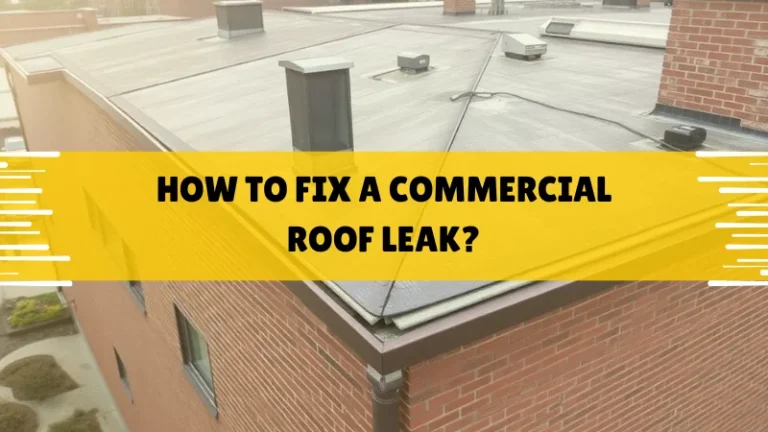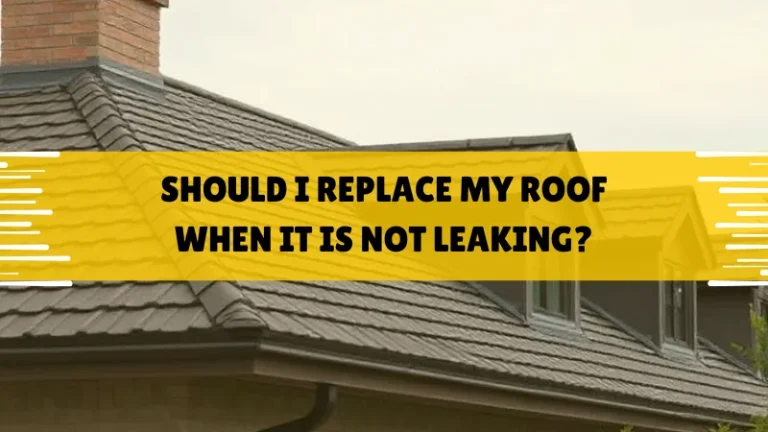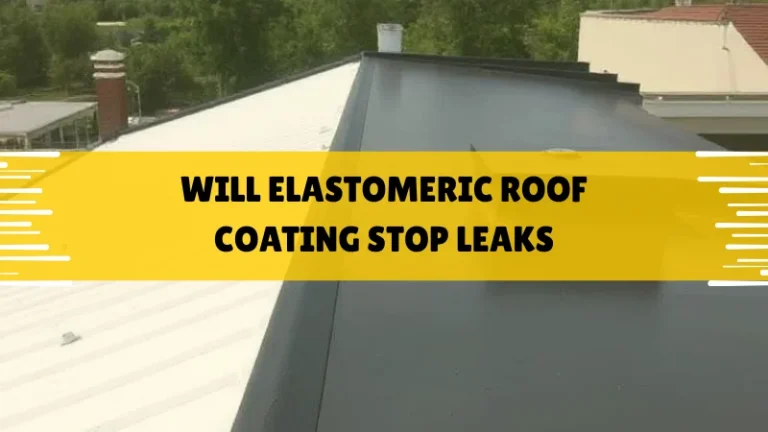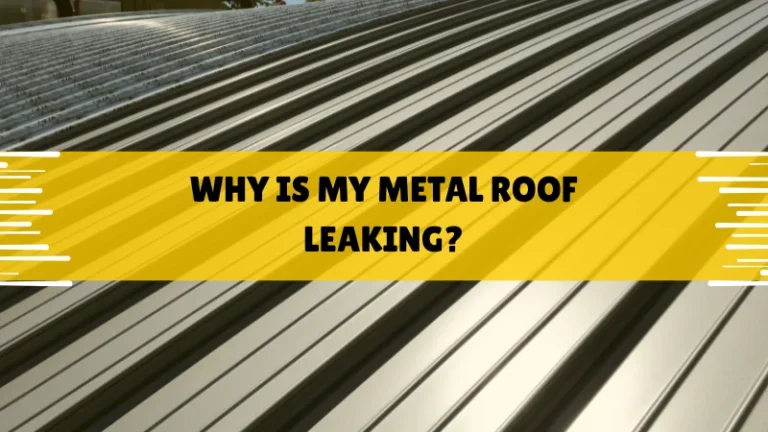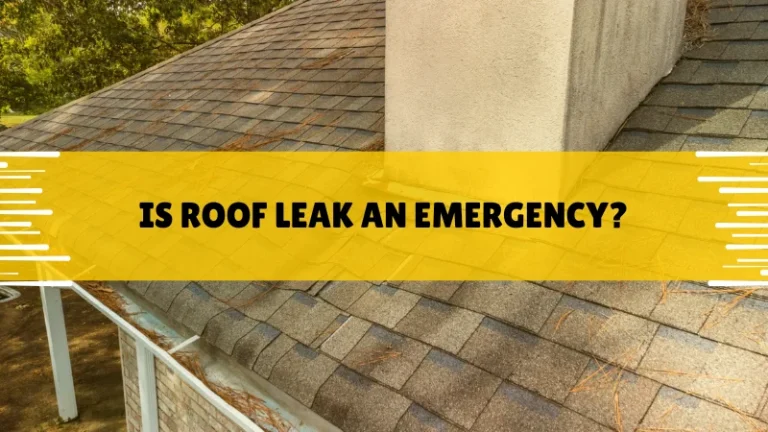How to Stop a Roof Leak From the Inside
Wanna know how to stop a roof leak from the inside? Dealing with a roof leak can cause quick damage to your home. But you can take steps from inside to handle it right away. This guide shows simple ways to manage the problem until you get full help.
First, stay calm and act fast to protect your space. Then, follow these methods based on what you see. In the end, always plan for long-term fixes to avoid repeats.
First Things First: Find Where the Leak Is Coming From
Begin by examining your ceiling on the lookout of wet spots or drips. Therefore, go to the attic in case you have one and find water trails with the help of a flashlight. In addition, check the presence of dark stains on wood or insulation that indicate points of entry of water.
Then use a marker or tape to indicate the area to be easily referred to later. Nevertheless, touching wet areas should be avoided to avoid additional damage. Rather, record any pipes or vents in the vicinity that could disorient the source.
Active dripping may require you to wait till it rains. But follow up the trail of the wet spot. Thus, this assists you to hit the correct fix without making a guess.
Keep the Water in to Minimize Damage
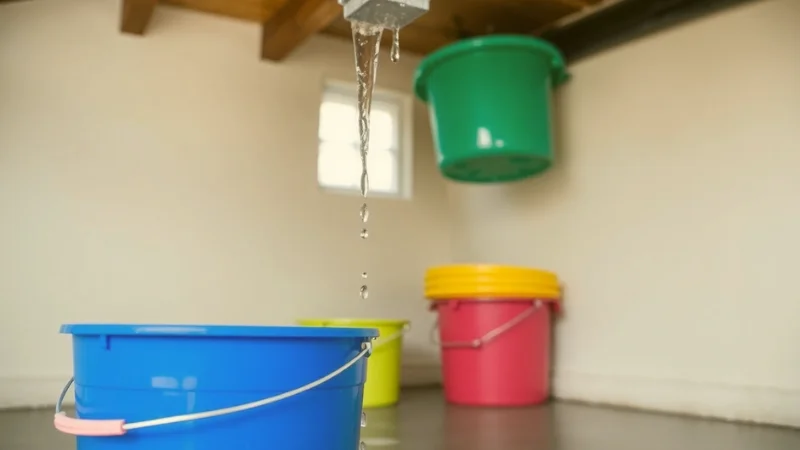
Put buckets or pans under the drip to get the water immediately. Next, lay plastic covers on the floor to avoid splashes. In addition, relocate furniture or objects to keep them dry.
In case the ceiling swells, put a small hole using a screwdriver to allow water to drip gradually. But do this sparingly, or you will have a big mess. Then, rinse the containers frequently to avoid overflow.
Towels: wipe up any standing water. This prevents the growth of moulds in damp places, therefore. Lastly, dry the area with fans and minimize additional problems.
Fast Hack Repairs You Can Do at Home
You need not climb to the roof to deal with small inside leaks. To begin with, prepare simple equipment such as a ladder and gloves to be on the safe side. Next, select an approach that would accommodate the leak size to retain water.
These fixes last only a short time until better weather or help arrives. However, they prevent more damage to walls and floors. So, apply them carefully in the attic or affected area.
Always clean the spot before starting any patch. But test materials on a small part first. Therefore, this ensures the seal works well without causing new problems.
Applying Roofing Tar or Sealant
Get roofing tar or sealant from a hardware store. Then, use a putty knife to spread it over the leak spot in the attic. Also, press it firmly to fill cracks or holes completely.
Let the tar dry for the time listed on the package. However, add a second layer if the first one seems thin. So, this creates a stronger barrier against water.
Check the area after rain to see if it holds. But remember, this is not a permanent solution. Therefore, plan for outside roof leak repairs new jersey soon.
Using a Plastic Sheet or PE Plastic as a Patch
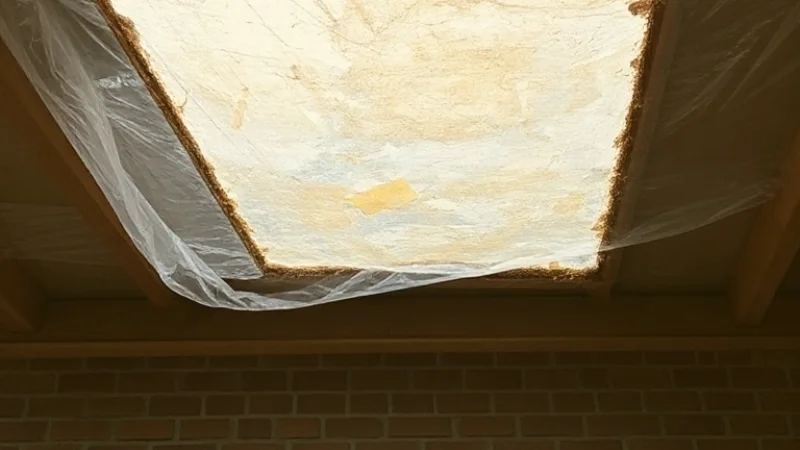
Cut a piece of PE plastic larger than the leak area. Then, attach it over the spot with staples or tape securely. Also, overlap edges to block water from sneaking around.
Smooth out any bubbles to make a tight seal. However, use roofing cement around the edges for extra hold. So, this keeps the patch in place during storms.
Inspect it regularly for shifts or tears. But replace if water still gets through. Therefore, it buys you time for proper fixes.
Roofing Tape for Small Cracks and Gaps
Pick waterproof roofing tape designed for quick repairs. Then, peel off the backing and press it over small cracks firmly. Also, rub it down to remove air pockets.
Cut the tape to fit the gap exactly. However, apply it in dry conditions for best stick. So, this seals minor leaks fast without mess.
Test by pouring water nearby if possible. But avoid using on large areas. Therefore, combine with other methods for bigger issues.
Tarps or Felt Paper for Larger Sections
Roll out a tarp or felt paper over the wide leak zone. Then, secure it with nails or heavy objects around the edges. Also, layer it if one sheet is not enough.
Fold the material to fit uneven surfaces. However, ensure it directs water away safely. So, this covers big sections effectively indoors.
Monitor for pooling water under the cover. But adjust as needed to drain properly. Therefore, it protects until you can do more.
When It’s Safe, Consider Outdoor Patching
Wait for dry weather before going outside. Then, climb the roof carefully with proper gear. Also, locate the external source matching the inside spot.
Apply patches like new shingles or flashing on the outside. However, use caulk to seal joints around vents or chimneys. So, this addresses the root cause better.
If heights scare you, ask for help. But always prioritize safety over speed. Therefore, outdoor work often lasts longer than inside fixes.
Call in the Pros for a Lasting Repair
Contact a roofing company if the leak persists. Then, describe what you saw and did inside. Also, share photos of the damage for their review.
Pros use tools to find hidden issues quickly. However, they provide guarantees on their work. So, this ensures the repair holds up over time.
Expect them to inspect the whole roof. But follow their advice for full fixes. Therefore, it saves money on repeated problems.
Preventing Future Leaks
Check your roof twice a year for wear. Then, clean gutters to stop water buildup. Also, trim trees that hang over to reduce debris.
Replace old shingles or seals as needed. However, add insulation in the attic for better protection. So, these steps keep leaks away.
Watch for signs like stains early. But act on small issues before they grow. Therefore, regular care maintains your home well.
Final Thoughts On How to Stop a Roof Leak From the Inside
Stopping a roof leak from inside helps in emergencies. But always aim for complete repairs outside. So, use these tips to stay dry meanwhile.
Remember, quick action limits costly damage. However, pros handle complex cases best. Therefore, combine DIY with expert help for peace of mind.



